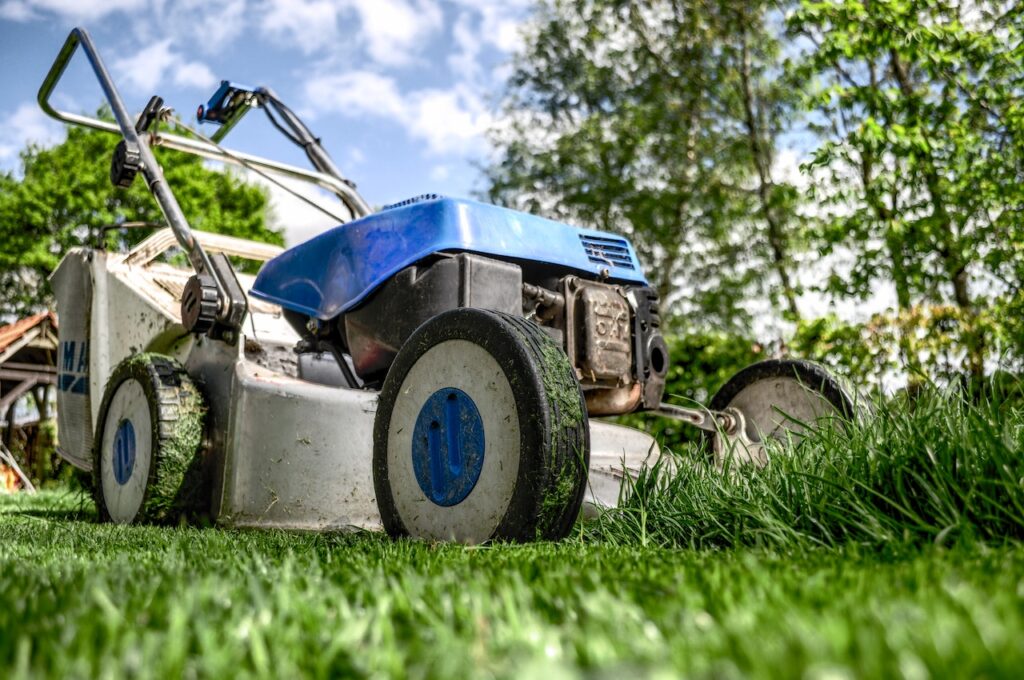A lush, vibrant lawn is the pride of homeowners everywhere. It’s a canvas of green that sets the stage for outdoor gatherings, playtime with kids and pets, or simply a place to unwind. But achieving that perfectly manicured lawn requires more than just regular mowing. In fact, improper mowing practices can turn your beautiful turf into a battleground of brown patches, weeds, and unhappy grass.
In this article, we’re embarking on a lawn care SOS mission. We’ll explore the dire consequences of improper mowing and learn how to rescue your yard from its clutches.

The Fallout of Fumbling with the Mower
1. Scalping Your Green Carpet
One of the most common sins of improper mowing is scalping your lawn. Scalping occurs when you cut your grass too short, often removing more than one-third of the grass blade’s height in a single mow. This can shock your grass and expose the soil to the harsh sun, creating an environment ripe for weed growth.
Solution: Set your mower blades to the appropriate height for your grass type and aim to remove only the top one-third of the grass blade at each mow. Taller grass shades the soil, retains moisture, and naturally suppresses weed growth.
2. Dull Blades, Dull Results
Using a dull mower blade is akin to trying to slice a tomato with a blunt knife – it’s ineffective and leaves a messy result. Dull blades tear the grass rather than cutting it cleanly, which can lead to brown, ragged edges.
Solution: Keep your mower blades sharp. Sharpen them at the beginning of each mowing season and periodically throughout the year for optimal results.
3. Ignoring Mowing Patterns
Mowing in the same direction every time can lead to soil compaction and uneven growth patterns. Over time, this can result in a less healthy and aesthetically pleasing lawn.
Solution: Change your mowing pattern regularly. This prevents the grass from being compacted in one direction and encourages a more even, upright growth.
4. Timing Is Everything
Mowing too infrequently can lead to an overgrowth of grass, making it harder to mow and causing clumps of clippings to smother your lawn.
Solution: Stick to a regular mowing schedule, mowing no more than one-third of the grass blade’s height at a time. During the growing season, this may mean mowing once a week.
The Road to Recovery
Now that we’ve diagnosed the issues caused by improper mowing, let’s explore how to nurse your lawn back to health.
1. Raise Your Mower Blades
If you’ve been scalping your lawn, raise the mower blades to the recommended height for your grass type. This might initially make your lawn look a bit unkempt, but it’s a necessary step in helping it recover.
2. Water and Fertilize
Proper watering and fertilization are crucial to healing your lawn. Deep, infrequent watering helps your grass develop deeper roots, making it more resilient. A balanced fertilization schedule provides the nutrients needed for recovery.
3. Aerate and Overseed
Aeration helps alleviate soil compaction, allowing air, water, and nutrients to reach the roots. Following aeration, overseed your lawn to fill in any bare or thin spots.
4. Patience and TLC
Finally, remember that recovering from improper mowing takes time. Be patient and continue with your newfound proper mowing techniques and lawn care practices. Over time, you’ll see your lawn transform into a healthy, lush paradise once more.
When to Call in the Professionals
If your lawn has suffered severe damage from improper mowing, or if you simply want the assurance of an expert touch, it might be time to consider calling in the professionals. Lawn care specialists have the knowledge, experience, and equipment to assess your lawn’s specific needs and provide tailored solutions.
In conclusion, improper mowing isn’t the end of your lawn’s story. With the right care and attention, you can rescue your yard from its clutches and restore it to its former glory. Remember, a healthy lawn isn’t just a beautiful sight; it’s also a welcoming outdoor oasis for you and your loved ones to enjoy. So, roll up your sleeves, follow the tips in this article, and watch your lawn thrive once more. Your green oasis awaits!
Comments